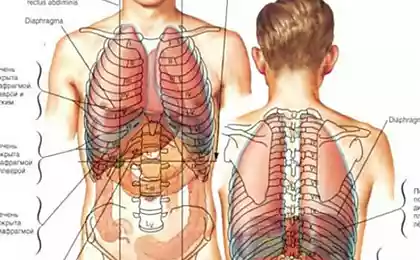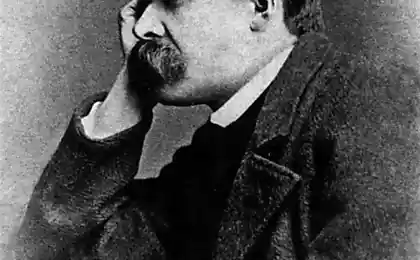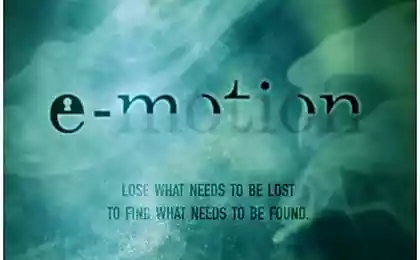189
What is chronic dissatisfaction and how it affects life

Each of us at least once in his life felt a sense of dissatisfaction. It can manifest itself in different areas: career, relationships, financial situation or personal development. But what happens when a temporary feeling develops into a chronic state? When does dissatisfaction become not the engine of progress, but the heavy fetters that prevent you from enjoying the present and building the future?
Chronic dissatisfaction is a psychological state characterized by a constant feeling that life does not meet expectations, despite objective achievement and well-being. This is a kind of trap of consciousness, when attention is focused not on the available goods, but on what is missing.
Anatomy of chronic dissatisfaction
To understand the phenomenon of chronic dissatisfaction, it is necessary to understand its roots. According to research in the field of cognitive psychology, it is formed under the influence of several key factors:
- Cognitive distortions Systematic errors of thought that cause us to misinterpret reality. For example, selective attention (focusing only on negative aspects) or depreciation of the positive (ignoring one’s own achievements).
- Unrealistic expectations Setting the bar of achievement at an unattainable high level or forming ideas about life based on idealized images from social networks and media.
- Neurotic perfectionism Painful striving for perfection, when any result that does not reach the ideal is considered a defeat.
- Hedonic adaptation A psychological mechanism by which we quickly adjust to a new level of comfort or happiness.
How to recognize chronic dissatisfaction?
The main signs of chronic dissatisfaction:
- Constant comparison Continuous comparison of one’s achievements with others’ successes or with an idealized image of oneself
- A little more syndrome The belief that happiness will come when the next goal is achieved.
- Difficulties in decision-making Fear of missing out on the best option
- Emotional exhaustion Feeling burned out even after achieving the desired
- Ignoring the present moment Inability to enjoy current circumstances due to permanent fixation in the future
- Self-criticism Strict attitude to their own mistakes and shortcomings

Two-Faced Janus: When Dissatisfaction Is Useful and When It Is Destructive
Interestingly, not all dissatisfaction is harmful. It is important to distinguish between two types: productive and destructive.
Productive dissatisfaction
It is a temporary state that provides energy for growth and development. It is clearly focused on specific aspects of life that really need improvement and is accompanied by constructive action. Many great discoveries and works of art have come from the healthy dissatisfaction of their creators with the status quo.
Destructive (chronic) dissatisfaction
Unlike productive, it has no specific purpose and extends to all areas of life, forming a negative filter of perception. It paralyzes rather than motivates, turning into a constant background noise that poisons everyday life.
According to a study published in the journal Personality and Social Psychology Bulletin, people with high levels of chronic dissatisfaction exhibit higher rates of anxiety, depression, and psychosomatic disorders. In addition, they have reduced immune function and a higher risk of cardiovascular disease.
How Chronic Dissatisfaction Programms the Future
When dissatisfaction takes root in our consciousness, it begins to influence not only the present but also the future. This process can be described through several mechanisms:
- Self-fulfilling prophecy When a person’s negative expectations affect their behavior in such a way that those expectations actually come true.
- Cognitive filtering Selective perception of information confirming the already existing negative picture of the world.
- Brain neuroplasticity Regular experience of dissatisfaction forms stable neural connections, making this pattern of thinking automatic.
- Social exclusion The constantly dissatisfied person pushes others away, which leads to isolation and even greater dissatisfaction.
Research in neuroscience shows that the brain of a person who constantly focuses on negativity and dissatisfaction, over time, rebuilds, making this perception of the world dominant. This phenomenon is called negative neuroplasticity. Thus, chronic dissatisfaction becomes not just a temporary emotional state, but a way of thinking that determines a person’s entire life.
Practical strategies to overcome chronic dissatisfaction
Fortunately, even deep-seated chronic dissatisfaction can be overcome. Modern psychology offers an arsenal of effective tools:
Practical recommendations
- Practicing gratitude Taking at least three things you feel grateful for every day redirects your focus from what’s missing to what’s already there.
- Cognitive reassessment A technique from cognitive behavioral therapy that allows you to recognize and correct distorted thoughts that support dissatisfaction.
- Setting realistic expectations Revising its standards in the light of actual opportunities and circumstances.
- Mindfulness practice Regular meditation helps to develop the ability to live in the present moment without constantly assessing it through the prism of expectations.
- Searching for "flow" Regularly engaging in activities that completely absorb attention and bring pleasure from the process itself, not just the result.
- Digital detoxification Reduction of time on social networks that provoke comparison and dissatisfaction.
- Practice of self-compassion Develop the ability to treat yourself with understanding and kindness instead of constant criticism.
A University of California study found that people who practiced gratitude for just 21 days showed significant reductions in dissatisfaction and increased overall well-being. The effect persisted even 6 months after the experiment was completed.

Transforming dissatisfaction into a driving force
Instead of getting rid of the feeling of dissatisfaction, you can learn to transform it into constructive energy for development. This process requires awareness and includes the following steps:
- Awareness Recognize when dissatisfaction occurs and carefully examine its sources.
- Analysis Evaluate whether your claims to the current situation are justified and realistic expectations.
- Specification Turning a blurred sense of dissatisfaction into a clear list of actions.
- Integration Using this energy as fuel for concrete, measurable steps to improve the situation, rather than as an excuse for self-flagellation.
- Focus on the process, not just the outcome.
- Celebrate intermediate successes
- Distinguish what is in your power to change and what is not.
- Avoid comparing your path to others’ achievements.
- Regularly review and adjust your goals
Psychologist Mihai Csikszentmihalyi, the author of the concept of flow, argues that people who have learned to manage their dissatisfaction are able to use it as a source of internal motivation, preventing it from becoming a chronic source of suffering.
Instead of
Chronic dissatisfaction is not a sentence, but a signal of the need for change. By recognizing its signs and understanding the mechanisms of formation, we can turn destructive force into creative force. The ability to balance a healthy desire for improvement and grateful acceptance of the present moment is an art that can be learned.
Remember that growth and development are important, but just as important is the ability to stop and appreciate the path already traveled. Today is the future you dreamed of yesterday. By learning to appreciate it, you are laying the foundation for a truly happy tomorrow.
Glossary of terms
Cognitive distortions
Systematic errors in thinking that affect decision-making and judgment. They are formed due to simplified strategies of information processing, subjective perception of reality and social stereotypes.
Hedonic adaptation
A psychological process in which people quickly return to relatively stable levels of happiness or satisfaction despite major positive or negative events in their lives.
Neurotic perfectionism
A destructive form of perfectionism characterized by excessively high standards, a fear of mistakes, and a tendency to associate self-esteem solely with achievement.
Cognitive reassessment
Emotional regulation strategy, in which a person rethinks a situation to change its emotional impact, for example, finding positive aspects in a negative experience.
Neuroplasticity
The ability of the nervous system to change its structure and function as a result of experience. This allows the brain to form new neural connections and change existing ones throughout life.
The state of flow
A psychological state of total immersion in an activity characterized by high concentration, loss of sense of time, and deep satisfaction with the process itself, regardless of the outcome.
Self-compassion
Practice a kind and understanding attitude towards oneself in moments of suffering or failure, which includes three components: kindness to oneself, awareness of the universality of experience and attentiveness.























